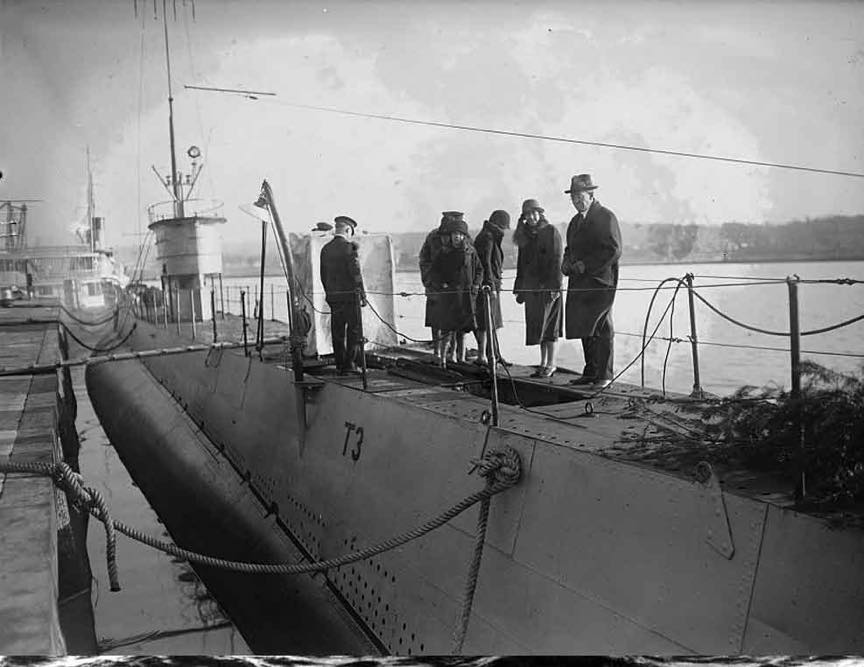T-3 SS-61

T-3
(Submarine No. 61: dp. 1,107 (n.) (surf.), 1,482 (subm.); 1. 268'9"; b. 22'10"; dr. 14'2" (mean); s.20 k. (surf.), 10.5 k. (subm.); cpl. 38, a. 6 21" tt.,
2 3"; cl. AA-1)
AA-3 (Submarine No. 61) was laid down on 21 May 1917 at the Fore River Shipbuilding Co. yard in Quincy Mass., by the Electric Boat Co. of New York, launched on 24 May 1919; sponsored by Mrs. Lilian Terhune Jordan; redesignated SF-3 on 17 July 1920 renamed T-3 on 22 September 1920, and commissioned on 7 December 1920 at the Boston Navy Yard, Lt. Comdr. Charles Milford Elder in command.
The second of three ships in a program to constructlong-rang reconnaissance submarines to operate with the surface fleet, T-3 joined T-1 in Submarine Division
16, Atlantic Fleet, soon after commissioning. She operated with that division-later to include T-2—conducting maneuvers with the Atlantic Fleet until the fall of 1922. By that time, flaws in the design and construction of the T boats-particularly in their propulsion plants— caused them to perform poorly. The decision was made to retire all three to the reserve fleet, and T~ was the first to go. On Armistice Day 1922, she was decommissioned at Hampton Roads, Va., and berthed at the submarine base located there. Later, she was moved to Philadelphia.
However, T -3's active service did not end there. At the time of the T-boats' decommissioning, the idea of testing German-produced diesel engines in one of them had been bantered about in Navy circles. T-1 had originally been designated for this purpose, but funds were not then available. In 1925, when money was forthcoming, it was T-3 that came out of mothballs for the tests. On 1 October 1925, T-s was recommissioned at Philadelphia. For the following 21 months, she tested her newly installed 3,000-horsepower M.A.N. diesel engines for the Bureau of Engineering. Early in the summer of 1927, she completed the tests and, on 14 July 1927, was placed out of commission at Philadelphia. After a little over three years of inactivity, her name was struck from the Navy list on 19 September 1930. Her hulk was broken up, and the materials were sold for scrap on 20 November 1930.
Tambor received 11 battle stars for World War II service.
